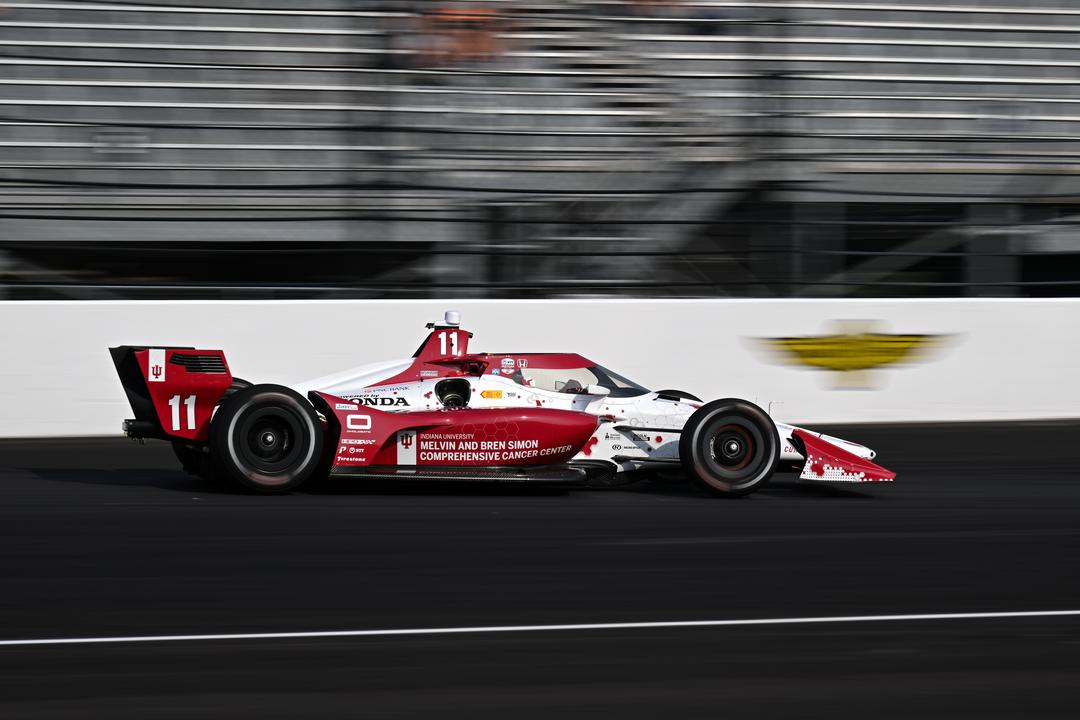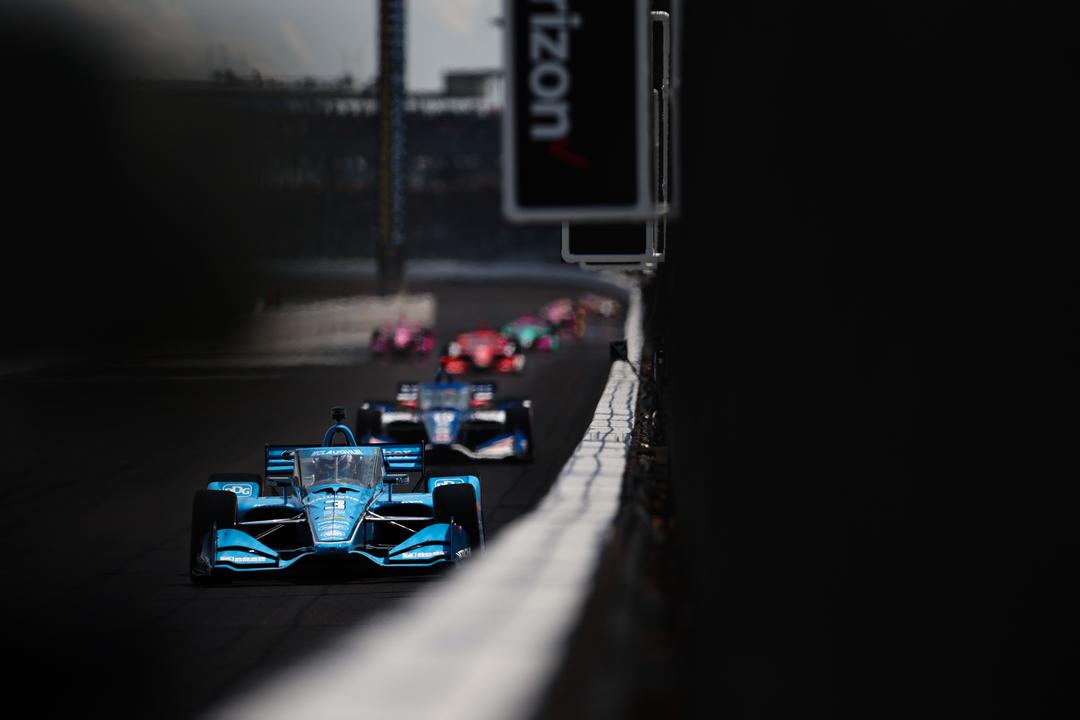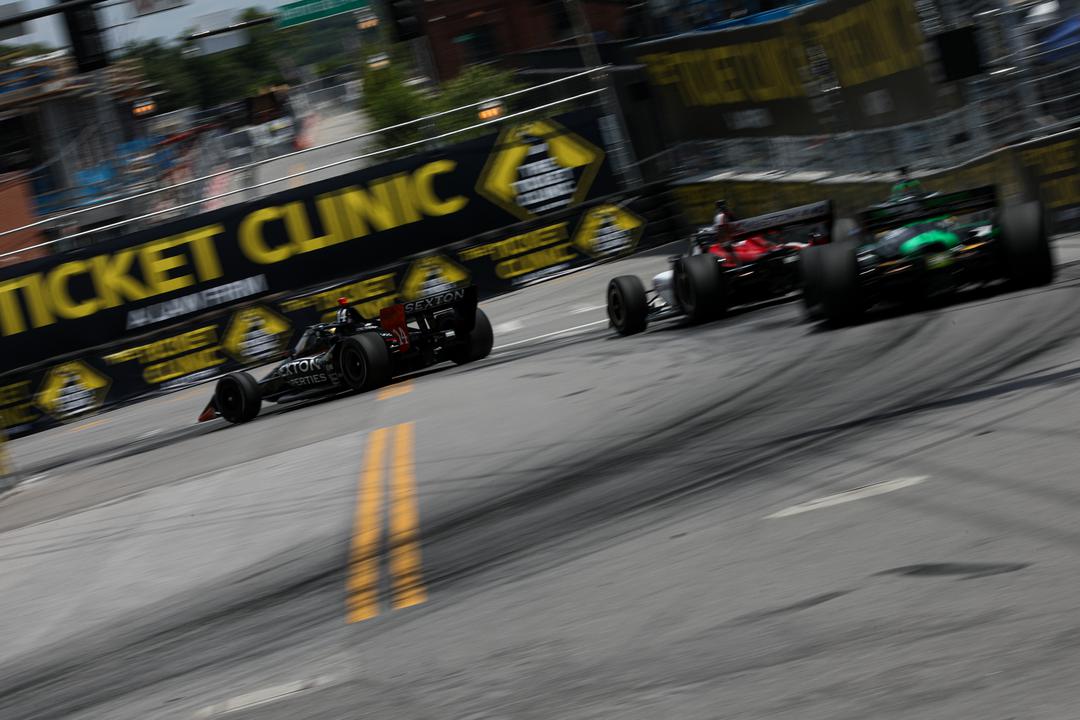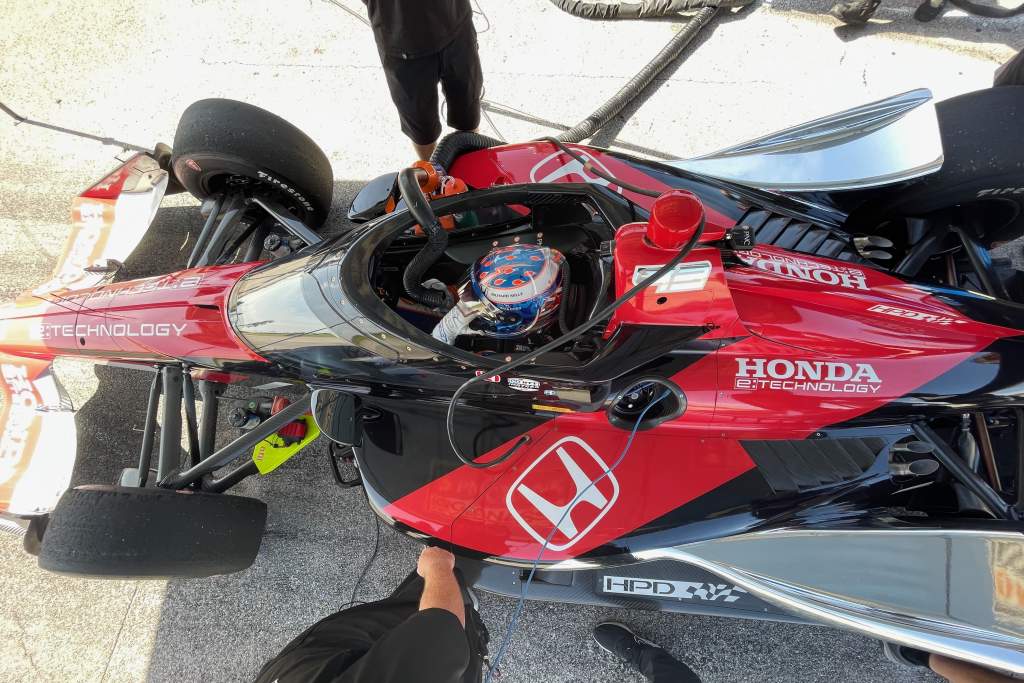IndyCar and its manufacturers Chevrolet and Honda have completed two days of on-track running at Sebring ahead of introducing the new hybrid-boosted engine package for 2024.
Initially, IndyCar had planned to bring in a new 2.4-litre unit with hybrid power for 2023, but that was delayed, and then the 2.4 unit part was dropped completely in December last year.
That was in order to bring the development of the hybrid – initially done by Mahle – in-house, to make sure it would be working and ready for implementation in 2024. Continuing with both could have caused delays and much higher costs, so the decision was taken to prioritise the hybrid element and pair that with the existing 2.2-litre engines used since 2012.
IndyCar says this is the first time the hybrid components were combined with the 2.2-litre engine on track.
There are not many more gruelling places to put a new package through its paces than the incredibly bumpy Sebring in August. Despite some rain, 1400 miles were completed by Will Power (Penske, Chevy) and Scott Dixon (Ganassi, Honda) over Wednesday and Thursday. No serious mechanical issues have been reported.
For reference, that distance is the equivalent of over six race distances at IndyCar’s longest road course event at Road America. The March test achieved a similar mileage.
The hybrid element of the engine is made up of a motor generator unit (MGU) which is fitted at the rear where the remote starter currently used attaches to the gearbox, while the super-capacitor – storing the energy – is inside the gearbox casing known to most as the bell housing.

Packaging this unit in the current IndyCar chassis – when the engine has already been refined by both manufacturers over 12 years to the point it’s as finely packaged as you can expect – has been a challenge, as you can imagine.
The super-capacitor is significant because most series use batteries to store energy, but the super-capacitor helps to keep the weight of the IndyCar down and the amount of space taken up to a minimum, which was vital in retrofitting a hybrid system to the current IndyCar.
Super-capacitors are not good for long-lasting power. But this hybrid will be used as part of IndyCar’s push-to-pass system in 2024, which suits the super-capacitor’s upside of being good at short, sharp and powerful boosts of energy.
It also has certain safety benefits – it can be less volatile than alternatives, which is good when IndyCars reach speeds of 240mph.
The end result of the package is that the stored energy is used to power IndyCar’s new push-to-pass system.
Currently, on road and street courses, IndyCar drivers have a boost of 60bhp for 200 seconds and they can decide when and where to use that over a race. It’s a more flexible alternative to Formula 1’s DRS.

With the new system, there will be an extra 150bhp on tap from the hybrid, and it can be used repeatedly through the race without a time limit. The only limitation is how good drivers and teams are at figuring out how to recharge their push to pass.
IndyCar still hasn’t confirmed exactly how regenerating the push to pass will happen. It’s usually done under heavy braking.
Using hybrid power on pitlane is common in other series, but how the hybrid gets used outside of the push to pass in IndyCar is still to be confirmed and, perhaps more importantly, clarified.
How successful drivers and teams are at regenerating – or harvesting – energy, as it’s sometimes known, will likely change the course of races.
It will be harder to harvest effectively in certain scenarios and that could leave you vulnerable.
“It will change the strategy, especially if you have to regen and you’re being attacked and it’s going to be hard to regen,” Dixon said after the test.
“It’s going to add a different dynamic. Not only from a strategy but for the person in the seat. You have to be thinking pretty quickly and making the right decision at the right time, which will make the racing even more spicy, which will be pretty cool.”

Power added: “A lot of things to be decided, but ultimately you can have more power all of the time, which would be good.
“We all love more horsepower. I think you want the most regen that you can have and use the engine to its max. It’s exciting.”
Some more details about the engine have emerged, too.
The new unit will not require a starter, it will be started on the hybrid motor. This should eliminate tens of cautions per year where drivers stall on track and have to be recovered.
Honda and Chevrolet might have spent the whole of the current engine cycle fiercely trying to destroy each other in the end of season rankings and at the Indianapolis 500, but in the automotive world Honda and General Motors already collaborate in areas including battery development.
So it’s less surprising from that standpoint to see the marques working so closely to finish IndyCar’s power unit package.
Another area they have been helping with is reducing weight. Even before the addition of the aeroscreen device some believed the car was too heavy, so adding the hybrid unit too will only add to that.
However, 100lbs or 45kgs have already been stripped out of the car and a new, lightweight aeroscreen will further reduce the outright weight for next year.
Images courtesy of IndyCar






